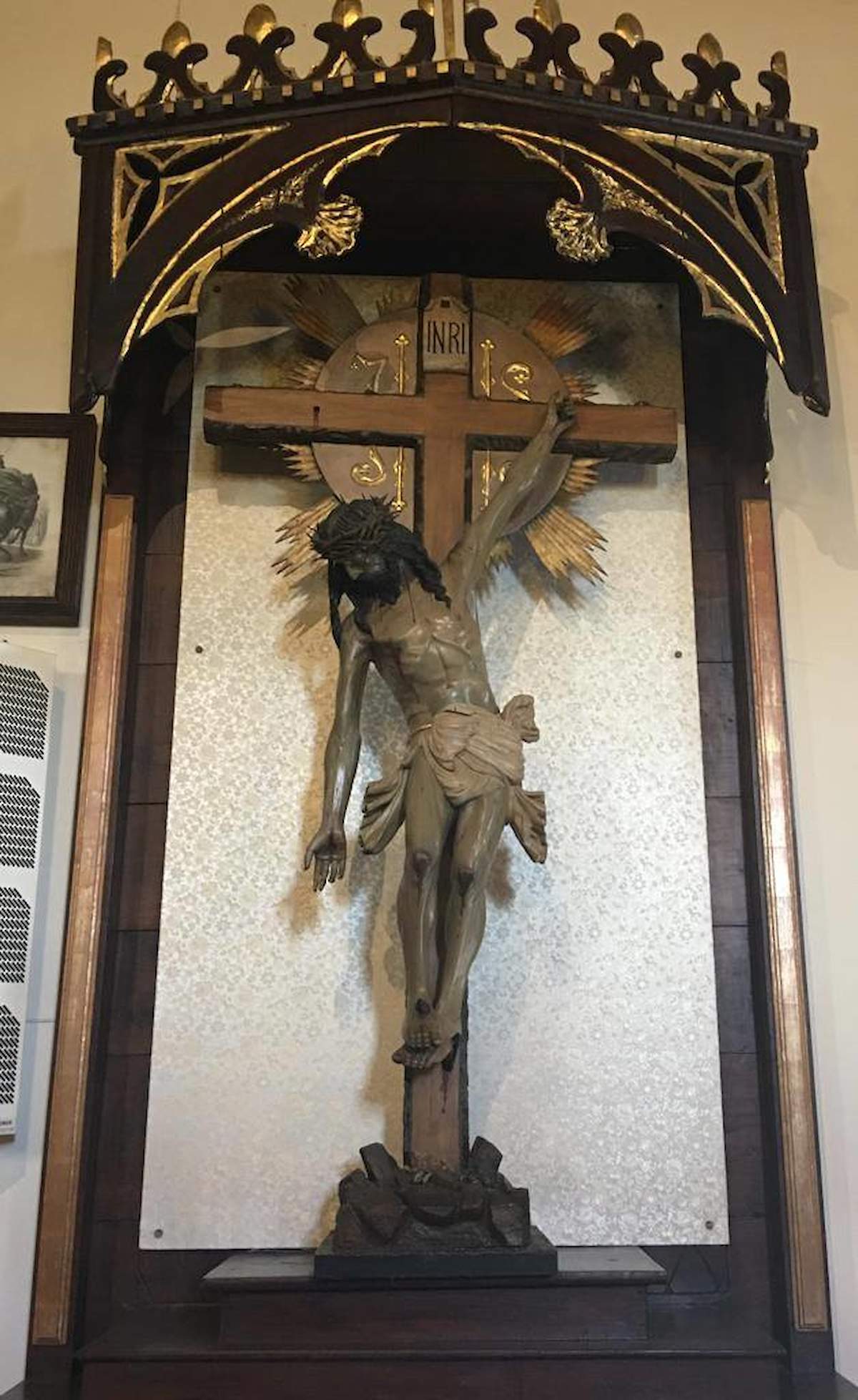
A helping hand on the Camino
Pilgrims visiting Melide wonder why this crucifix has shown Christ with his arm hanging down. Is he pointing the way towards Santiago? We look at the possibilities.
This unusual wooden crucifix is in the 12th-century church of San Juan (St. John) on the Camino de Santiago in the village of Furelo near Melide, Galicia. The statue is called ‘Cristo de la Mano Tendida’ (Christ of the Outstretched Hand) was carved by local artist Manuel Cagide. It shows Jesus’ right arm hanging down. Some say that he is holding out a hand to help pilgrims and encourage them on their way to Santiago di Compostela, which is only 39 miles (63 km) away. Christ is thought to be stretching out his hand towards the faithful in an exhortation to continue to keep hopeful that they will complete the journey they have undertaken. But does it? In fact, there are several interpretations of the figure’s gesture.
According to local tradition, in 1512, several women were praying together in front of the statue when its right arm that had been on the Cross extended downward towards one of the them and a voice said: ‘You are the only one who has prayed before me with a petition full of love for someone other than yourself. You have asked me to cure your son from his life-threatening illness and have offered your own life in exchange for his. I will respect your life and will cure your son.’
The voice fell silent and the arm remained in its new position forever. Another local legend suggests that centuries ago, one of the faithful went every week to the church to confess his sins but he did it almost mechanically, as if he were reciting a litany. The priest, irritated, rebuked him and told him to change his tone. Despite this, the man returned and resumed, saying the sins he had committed in the usual way. At this point the priest, impatient, told him that he would no longer absolve him. Humiliated, the parishioner looked up from the confessional and to the crucifix, where he saw Jesus admonishing the parish priest for his severity, telling him: ‘I gave my life for this my son, so if you do not absolve him, I will absolve him.’
Legend has it that Christ took his right arm off the Cross to make the sign of the Cross and absolve the parishioner of his sins. Since then, the statue has remained in its unusual position, with an arm hanging down at an angle free from the Cross.
The various legends are charming and of course, miracles do happen. However, this crucifix is not the only one of its kind. There are another two in Spain - the Cristo de la Vega in Toledo and the Cristo de Fuentelcarnero in Zamora, and one in Salerno, Italy. This is thought to be because the crucifix is thus styled for practical purposes. It does not depict Jesus detached from the Cross but rather with moveable wooden shoulders so the figure can be easily disengaged from the Cross during the liturgy on Good Friday for the Deposition. Whatever the reasons behind the distinctive format of the crucifix, it is worth visiting when you pass by the church on the Camino